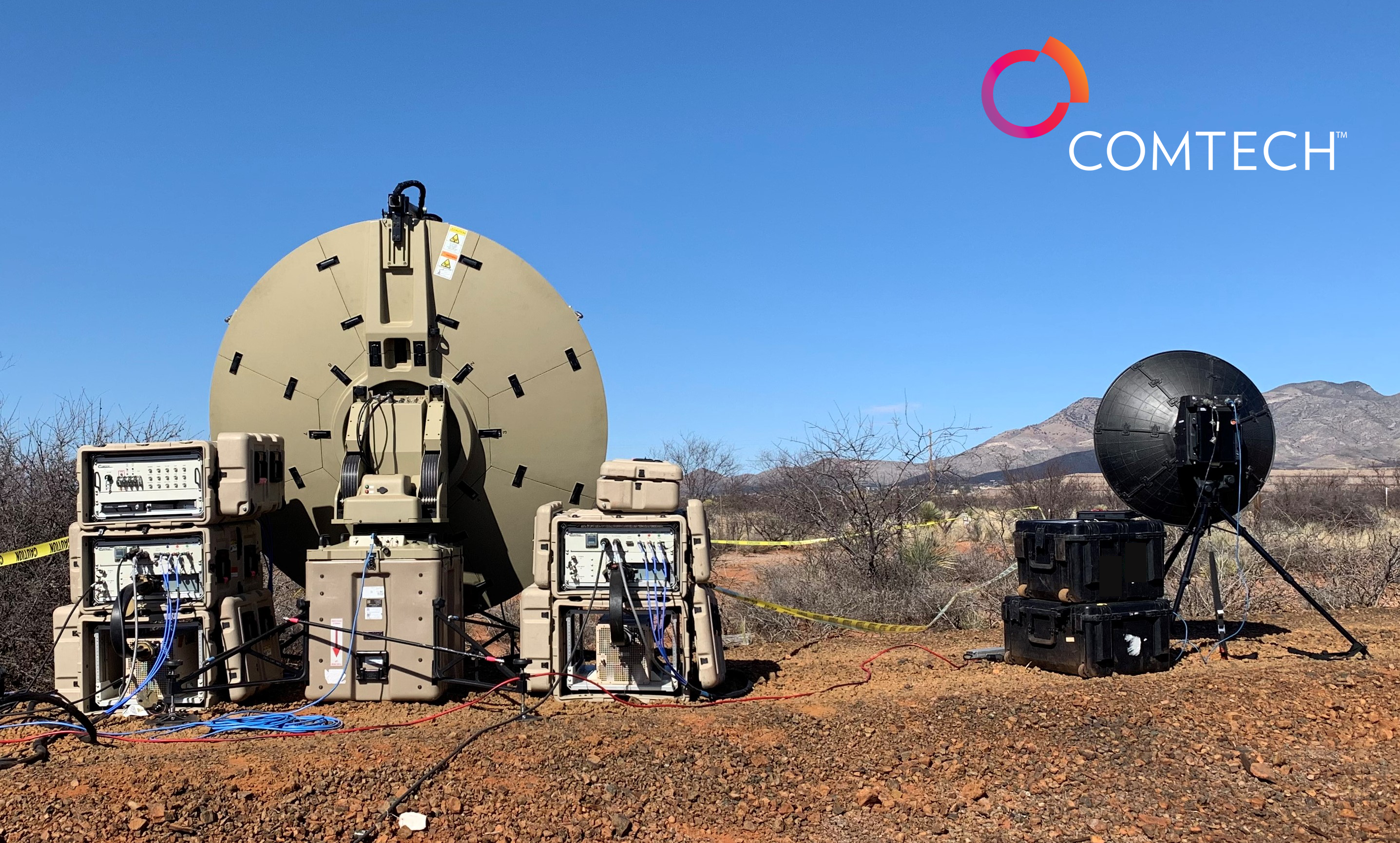Obstructed Line of Sight
Imagine the challenge of setting up communication links in areas, where tall buildings, bridges, mountains, and various structures obstruct direct line-of-sight between transmitting and receiving stations. Traditionally, long-distance communication systems known as Troposcatter transmission were used in remote and harsh environments. But now, thanks to advancements in smaller next generation Troposcatter technologies, like those developed by Comtech, this technology can be applied for shorter distance communication links in a wide range of scenarios.
In environments, distances ranging from 1 to 10 kilometers often require communication over Obstructed Line-of-Sight (OLOS) links. The cityscape, battlefield, disaster scenario, and rural communities are filled with buildings, vegetation, vehicles, signs, and power cables that reflect radio signals, causing them to take multiple and unpredictable paths to reach their destination.
These geographic challenges presented a new opportunity for innovation, and Comtech saw it in the troposphere, the lowest portion of the atmosphere located about 8 to 15 kilometers above the Earth’s surface. Comtech’s Troposcatter Family of Systems (FoS) enable communications beyond the horizon. Radio signals travel through this layer of the atmosphere through forward scatter, where irregularities in the atmosphere’s refractive index create multiple radio paths, known as multipath transmission.
Dealing with multipath transmission can be challenging due to transmission delays over different signal paths and something called Short-term fading. This phenomenon results in rapid and deep changes in the signal level, making it tricky to maintain stable connection, especially when signals traverse over short time intervals (millisecond periods) with changes as significant as 40dB.
Comtech’s next generation Troposcatter FoS addresses the complexities of OLOS environments by combining multipath signals and mitigating short-term fading using diversity combining receivers. This unique configuration, known as the diversity system, allows Comtech to combine two or more independent signals received from various transmission paths. By doing so they increase the signal-to-noise ratio (SNR), resulting in a more reliable and stable SNR. This means a reduced likelihood of the combined signals’ quality falling below the minimum threshold needed for proper reception. The System also compensates for the time delays that signals experience while taking different independent paths between transmitting and receiving stations.
As the leading provider of Troposcatter systems, Comtech’s next generation Troposcatter FoS allow military operators and other end users to deliver vital information hundreds of miles over the horizon, or beyond-line-of-sight (BLOS), by bouncing microwave radio signals off the upper layers of the troposphere. Today, Comtech’s next generation Troposcatter FoS are delivering performance enhancements that represent a one-thousand-fold increase over former generations of Troposcatter systems.

Comtech’s portfolio of defense and security technologies, including the company’s Troposcatter FoS, are uniquely positioned to deliver capabilities that will enhance Combined Joint All Domain Command and Control (CJADC2) operations. The company has extensive experience developing and deploying customized, interoperable, robust, and resilient communications systems for all branches of the DOD and coalition forces. Comtech’s expansive portfolio of defense and security technologies is designed to continuously evolve over time to meet emerging Command, Control, Computers, Communications, Cyber, Intelligence, Surveillance and Reconnaissance (C5ISR) use cases and enhance mission effectiveness in future all domain command and control operations.
This article is the fourth in a series that will focus on important Troposcatter use cases including: Relay Link Replacement, Troposcatter Communications on the Move, Obstructed Line of Sight Communications, Operations in Contested/Congested Satellite Environments, and Extension of Services.
Comtech’s Troposcatter FoS meets the CJADC2 communication needs. Contact a Comtech representative at contact us, to discuss how Comtech’s Troposcatter FoS can increase the efficiency and effectiveness of your organization
Learn more about the Troposcatter Family of Systems below.
1. Introduction



